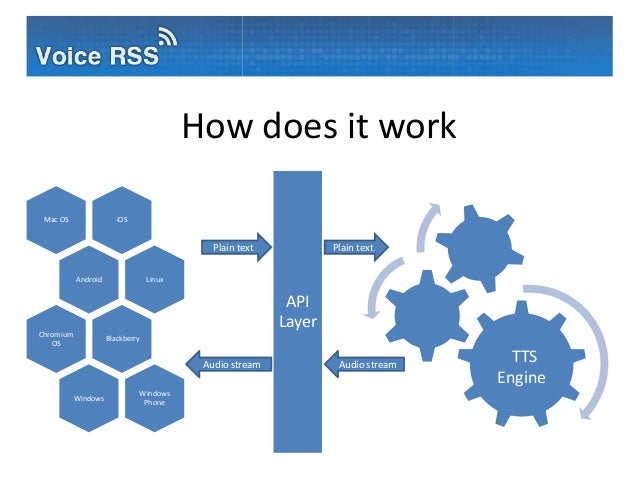
- #Speech to text api open source how to
- #Speech to text api open source software
- #Speech to text api open source code
It is also the first ASR system which utilizes only convolutional layers, not recurrent ones. They advertise it as the first speech recognition engine written entirely in C++ and among the fastest ever. The Wav2Letter++ speech engine was created quite recently, in December 2018, by the team at Facebook AI Research.
#Speech to text api open source code
In order to integrate it into a larger application, your company’s developers would need to build an API around its inference methods and generate other pieces of utility code for handling various aspects of interfacing with the model. Also, the fact that DeepSpeech is provided solely as a Git repo means that it’s very bare bones.
#Speech to text api open source software
This could mean much less support when bugs arise in the software and issues need to be addressed. Due to some layoffs and changes in organization priorities, Mozilla is winding down development on DeepSpeech and shifting its focus towards applications of the tech. It can also be compiled onto a Raspberry Pi device which is great if you’re looking to target that platform for applications.ĭeepSpeech does have its issues though. DeepSpeech also provides wrappers into the model in a number of different programming languages, including Python, Java, Javascript, C, and the. The great thing about using a code-native solution rather than an API is that you can tweak it according to your own specifications, providing ultimate customizability. Or, you can even take their pre-trained model and use transfer learning to fine tune it on your own data. However, if you do have your own data, you can also train your own model. One nice thing is that they provide a pre-trained English model, which means you can use it without sourcing your own data. Their model is based on the Baidu Deep Speech research paper and is implemented using Tensorflow. And guess what, I can write in completely random, informal Swiss German dialect and ChatGPT understands everything, but answers in standard German.Try Rev AI Free: The World’s Most Accurate Speech Recognition API Mozilla DeepSpeechĭeepSpeech is a Github project created by Mozilla, the famous open source organization which brought you the Firefox web browser. It's a mostly undocumented/unofficial writing system. There is no orthography (writing rules), no grammar rules etc. For those who don't know: Swiss German is a dialect continuum, very very different from standard German to an extend, that most untrained German speakers don't understand us. That's revolutionary for minority languages without a lot of learning material available online.Īlso I am a native Swiss German speaker. For example when you ask it to translate "I love you" into Thai, it mentions, that normally you would not say this in the same circumstances as you would say it to your lover in the West, correctly explaining in what circumstances people would really use it, and what to use instead. It even takes cultural differences into account. That's better than any machine translation I've ever tried so far. If you're not interested in building or maintaining your own, you can use our API! I'd be happy to help.ĬhatGPT is so crazy it even works in fluent Thai. As long as you have a GPU, you're good to go. In any case, these models are solid choices for building consumer apps. We can also do the hosting for you if that's not your desire or forte. If you want to train your own voice using your own collected sample data, you can experiment with it on Google Colab and on FakeYou, then reuse the same model file by hosting it in a cloud GPU instance.
#Speech to text api open source how to
FakeYou's Discord has a bunch of people that can show you how to train these models, and there are other Discord communities that offer the same assistance. These three models are faster than real time, and there's a lot of information available and a big community built up around them. You can mimic singing and emotion pretty easily. TalkNet is also popular when a secondary reference pitch signal is supplied. Input text => Text pre-processing => Synthesizer => Vocoder => => Output audio Your pipeline looks like this at a high level: You'll want to pair it with the Hifi-Gan vocoder to get end-to-end text to speech. You're looking for Tacotron 2 or one of its offshoots that add multi-speaker, TorchMoji, etc.

It's good for creatives making one-off deepfake YouTube videos, and that's about it. Tortoise produces quality results with limited training data, but is an extremely slow model that is not suitable for real time use cases. I'm the author of and can speak to Tortoise and the TTS field.


 0 kommentar(er)
0 kommentar(er)
